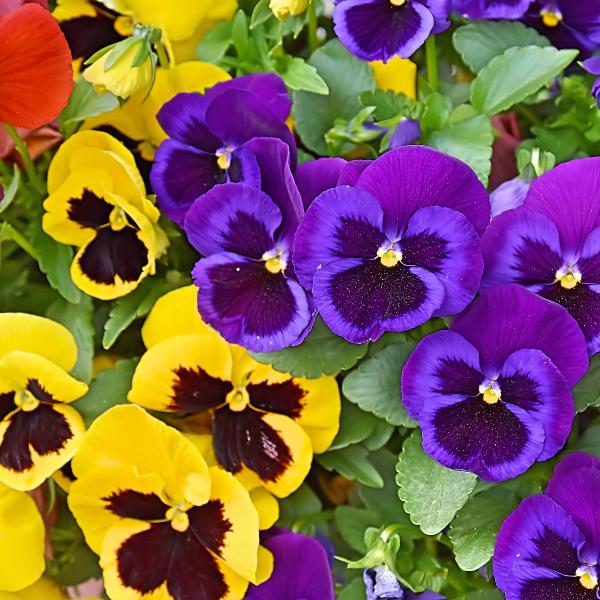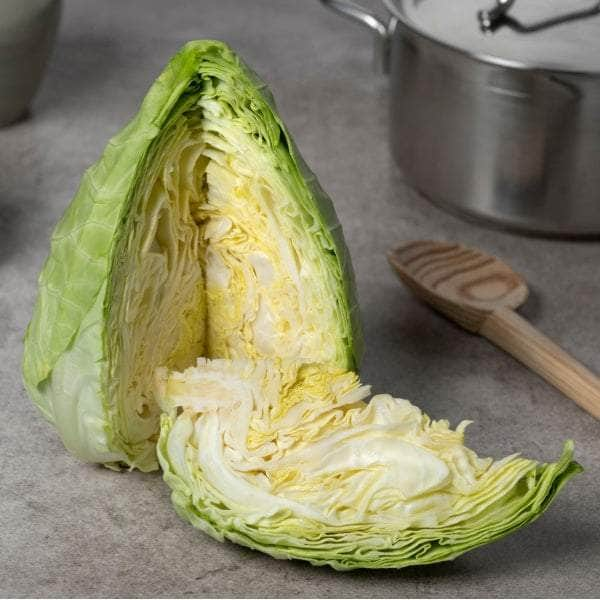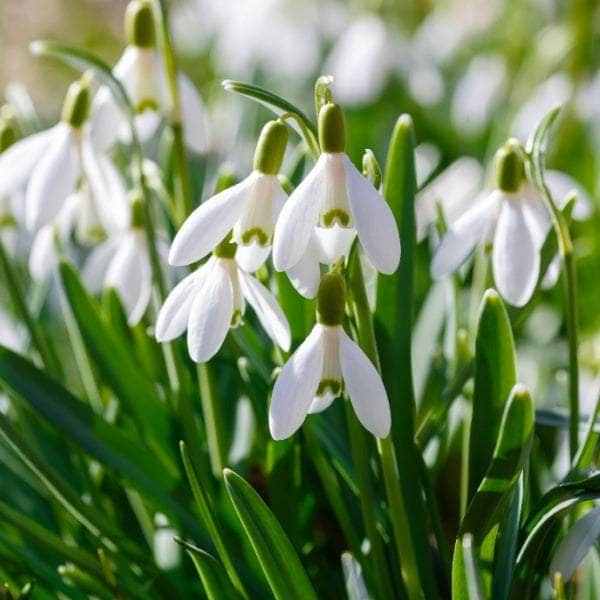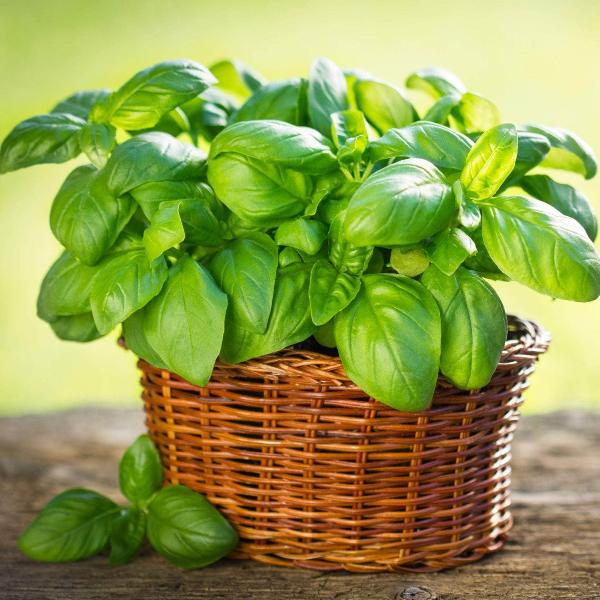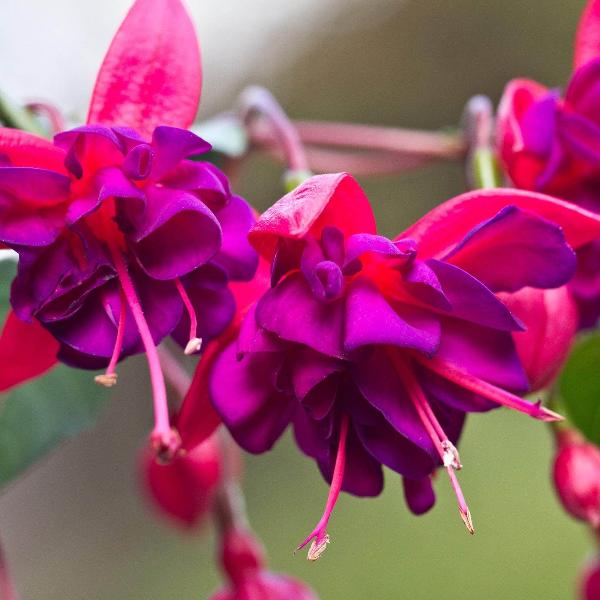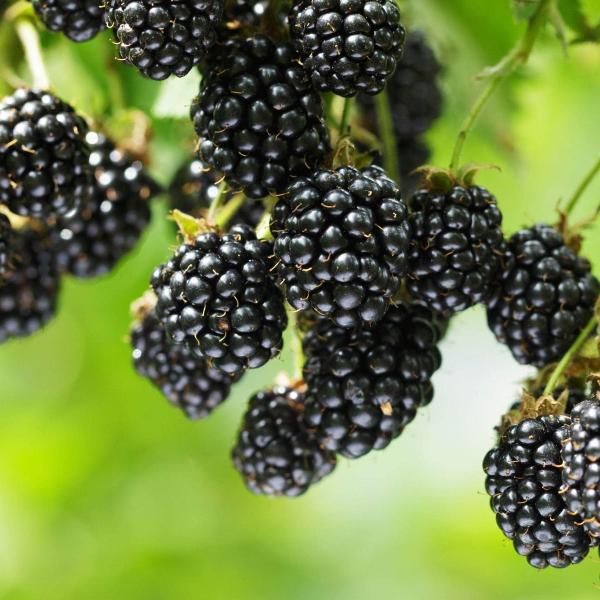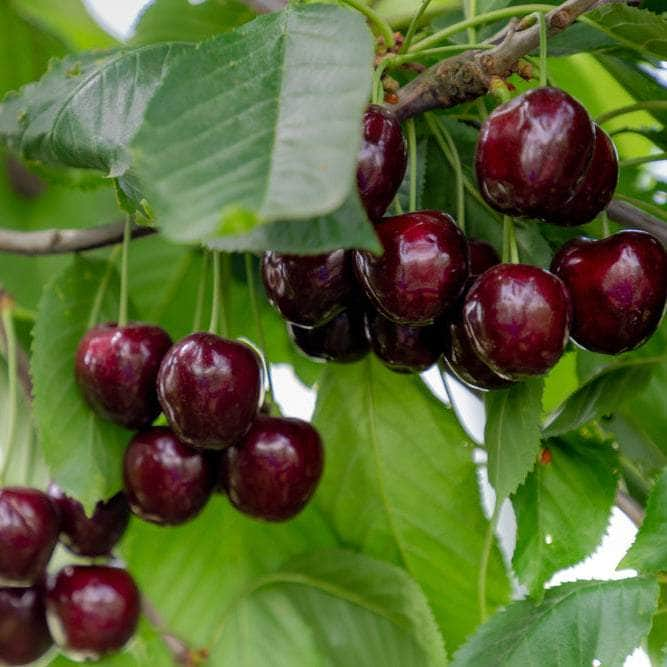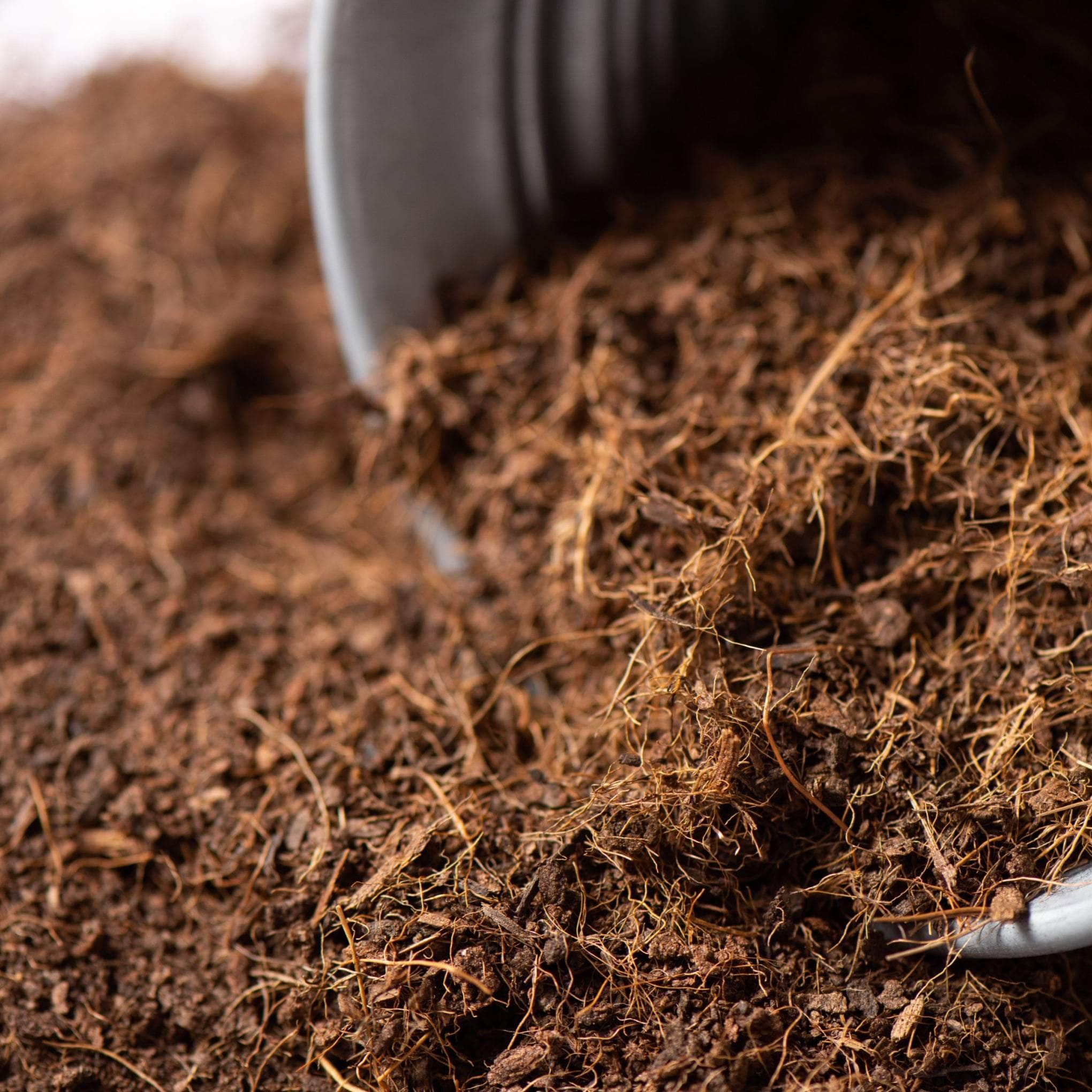The Comprehensive Guide to Growing Swede Plants
Welcome to our comprehensive guide on how to grow Swede, a winter vegetable with a rich history and a unique, yellow flesh. Whether you're a seasoned gardener or a green-fingered novice, this guide will provide you with all the information you need to sow Swede seeds, nurture the plants, and harvest your own home-grown Swedes.
We'll delve into the origin and characteristics of this root vegetable, explore the best varieties of Swede, and provide a step-by-step guide on how to prepare the bed, sow the seeds, and transplant the seedlings. We'll also discuss the benefits of companion planting with Swedes and how to care for your plants, including watering, fertilising, and dealing with common pests.
So, if you're ready to add a good variety of Swede to your garden, or even grow Swede in containers, then let's get started. Remember, every great garden begins with a single seed.
Let's sow yours today.
Understanding Swede: Origin, Characteristics and Varieties

Diving into the world of Swede, we'll explore its origin, characteristics, and the variety it offers. This root vegetable, with its unique blend of purple top and yellow flesh, has a rich history and a plethora of types to choose from. Each variety brings something different to the table, making Swede a versatile addition to any garden or kitchen.
From its humble beginnings in the cold regions of Sweden and Russia to its current global presence, Swede has proven its resilience and adaptability.
The Origin and Characteristics of Swede
Swede, famously known as the 'winter vegetable,' has quite a humble origin. Its genesis routes back to the cold regions of Sweden and Russia, hence the name ‘Swede’. Being a root vegetable, it's perfectly suited to the harsh weather conditions of these regions, highlighting its robust characteristics.
In terms of features, the main attraction is its vibrant colour palette. Imagine a smooth, round, almost spherical shape that carries a combination of purple top and yellow flesh - that's our Swede! Apart from being pleasing to the eyes, Swede has a mild, sweet taste adding a unique layer to your palette.
And don't get me started on its nutritional value. Packed with vitamins and minerals, swede stands as a significant contributor to your health, making it a must-have in your kitchen. So even though it has a different origin, Swede's characteristics are universal, adding value to any cuisine, regardless of culinary limitations.
Exploring the Best Varieties of Swede
Purple Top variety is cherished by many gardeners for its purple crown and yellow flesh, a nadir of good variety, being both delicious and nutritional.
Best of All is another excellent swede type; as the name suggests, it is highly favoured for its exceptional growth capacity and sweet taste.
Marian swedes are known for their resistance and compact size, making them perfect for smaller gardens.
Ruby, a newer variety, impresses with brilliant red skin and orange-yellow interior, a mouth-watering treat in winter.
Lastly, for lovers of unusual flavours, there's Virtue, delivering a unique, subtly spicy note to meals.
How to Grow Swedes: A Step-by-Step Guide

Growing your own swedes can be a rewarding experience, providing you with a fresh, organic supply of this nutritious vegetable. This section will guide you through the process, from preparing the bed for planting to sowing the seeds and transplanting the seedlings.
Whether you're a seasoned gardener or a beginner, these step-by-step instructions will help you understand how to grow swedes successfully. Let's delve into the world of swede cultivation and discover the joy of growing your own food.
Preparing the Bed for Swede Planting
In the path to grow swedes successfully, one of the crucial steps is to prepare the bed where they will thrive. Understanding what you are working with in terms of soil life and texture is fundamental.
Your choice of site needs to be sunny and well-drained. When preparing the bed, don’t forget to deeply dig the soil. The rich earth will act as the primary plant food for the swedes. Amend the soil with organic compost to provide the nutrients necessary for the growth of swede plants.
Sowing Swede Seeds: When and How
When planning how to grow swedes, the timing of sowing swede seed is an important consideration. The optimal sowing window for swede in the UK stretches from April through June. However, it's crucial to note the best time for sowing may vary based on your local climate. In warmer regions, you might opt for a later sowing time, while in colder or average UK areas, the third week of May is generally ideal.
Once you've chosen the perfect timing, start by creating a 1cm deep drill in the prepared seed bed with a trowel or even just your finger. Ensure the soil is dry and firm before sowing to help the swede seeds settle in better. Swede seeds can be sown thinly and should be about 5cm apart in your rows. Remember to label where you've sown to help locate your swede plants as they start to grow.
After sowing, cover the swede seeds with soil and gently water the area. With the proper warmth and moisture, swede seeds should germinate within about 10 to 12 days. Don't forget to regularly thin out the swede seedlings as they grow quickly, ensuring they're spaced about 20-25cm apart for optimal growth. Now that you've sown your seeds, prepare for the rewarding journey of growing swede plants. You'll soon be graced with a bounty crop to stand the British winter, ready to bring nutritional richness to your dinners.
Transplanting Swede Seedlings
Transplanting Swede seedlings can be a crucial step in the process of how to grow Swedes. The transition from a protected indoor environment to the great outdoors can sometimes be a bit of a shock to these small plants. However, with a bit of care, your Swedes will get used to their new home in no time.
They should be planted slightly deeper than they grew in the seed tray. This helps the plants to establish strong root systems and withstand outdoor conditions. Next up, water the transplant using a watering can, taking care not to soak the seedlings entirely. Frequent, light watering is more beneficial than occasional heavy watering. At this point, it's all about keeping a watchful eye, ensuring the transplanted Swedes continue to grow and thrive in their new location. This is, essentially, the stepping stone in successfully transplanting Swede seedlings.
Growing Swede in Containers and Pots
Growing swedes in containers allow urban gardeners, or those short on space, to enjoy this healthy root vegetable. The main consideration is to ensure you pick a container large enough. Swedes prefer enough room to spread their roots, a 40cm distance between each plant should suffice. Container gardening also allows you to have more control over the soil life, its moisture level, and temperature.
Use a peat-free multi-purpose compost to fill your container. This type of compost not only provides the necessary nutrients to the plant but also helps in maintaining moisture levels. For those new to gardening, begin by sowing the swede seeds directly into the container. The seeds can also be started in a seed tray and later transplanted into the pot. Ensure you water the seeds or seedlings well as dry conditions can harm the swede's development.
On a final note, don't forget to place your container in a sunny spot. Even though swedes are a cold-season crop, they need quite a bit of light for healthy growth. So, place them in a south-facing window or balcony. Whether you're growing swedes in pots or yards, the key is understanding their needs. With good planning, you can grow fruitful plants in just about any space.
Companion Planting with Swedes

Companion planting with swedes is a strategic approach that can significantly enhance your gardening experience. It's a method that involves pairing plants that complement each other, promoting healthier growth and a more balanced ecosystem in your garden.
When it comes to growing swedes, certain plants make excellent companions, offering various benefits from improved soil fertility to natural pest control. However, it's also crucial to know which plants to avoid pairing with your swedes to ensure optimal growth.
Benefits of Companion Planting with Swedes
Companion planting with swedes reaps tremendous rewards for any gardener. For one, it encourages healthier growth by enhancing soil fertility, retaining moisture, and deterring pests. The strategy of choosing plants that mutually benefit each other helps your swede plants and their companions to thrive. Not to mention, it helps maintain a sustainable ecosystem in your garden.
Furthermore, it can help combat potential diseases widespread within brassicas like club root. By integrating a four-year crop rotation and evading growing brassicas in the same space for that period ensures the worst effects of diseases are circumvented. This approach ensures optimal growth and development while mitigating risks associated with monoculture.
Best Companion Plants for Swedes
Here are some of the best companion plants to consider when growing swede plants:
Peas (Pisum sativum): These legumes can help enrich the soil, making it nutrient-rich for the swedes to grow.
Celery (Apium graveolens): This vegetable is an excellent companion because it doesn't compete with the swedes for space or nutrients.
Onions (Allium cepa): A fragrant allium, onions can deter pests, providing natural protection for your swede plants.
Dill (Anethum graveolens): A valuable herb, dill attracts beneficial insects like bees and predatory bugs, helping to naturally control pests.
Lamb’s lettuce (Valerianella locusta): This leafy green provides good ground cover and helps retain soil moisture, which benefits swedes.
However, do try to avoid planting tomatoes (Solanum lycopersicum) or peppers (Capsicum annuum) near your swedes as they may negatively impact their growth.
Swede Care: Watering, Fertilising and Dealing with Pests

Growing swede plants can be a rewarding experience, but it requires a keen understanding of their unique needs. This section will delve into the essentials of swede care, focusing on watering, fertilising, and dealing with common pests.
From maintaining the right soil moisture to using the right fertiliser, every step is crucial in ensuring a healthy, thriving crop. Additionally, we'll explore how to protect your swedes from common pests, ensuring your hard work doesn't go to waste.
Watering and Fertilising Your Swede Plants
Swede care is a two-pronged process: watering and fertilising. First, let's discuss watering. Swede germination requires mildly moist soil, but these plants aren't fond excessive wetness. It's imperative to strike a balance. Over-watering can lead to poor growth and disease.
On to fertilising. A good germination is partially dependent on the soil's nutrient content. Swedes benefit from a fertiliser packed with phosphorous, nitrogen, and potassium. A popular choice amongst seasoned gardeners is 'blood fish and bone' fertiliser.
In summary, effective swede care is about understanding their unique needs. Proper soil moisture and rich nutrients are the key to a flourishing swede plant.
Dealing with Common Swede Pests
Contending with pests is a key part of swede care. These plants often find themselves at the mercy of slugs and snails, especially during their seedling stage. Diligence is needed on your part to keep these pests in check. My recommendation is to carry out nightly inspections, particularly following wet weather, to eliminate any unwanted slimy visitors.
But dealing with these pests doesn't have to feel like an uphill battle. A simple measure you can put in place is a swede slug collar. These collars act as barriers, hindering these pests from reaching your valuable plants and causing damage.
Always remember, a well-cared-for swede plant is less vulnerable to pests. So, maintain good germination and watering practices. By adopting such proactive methods, you can create an environment where your plants flourish, and pests are effortlessly managed.
When and How to Harvest Swede

Understanding when and how to harvest swede is a crucial part of your grow diary. This section will guide you through the process, ensuring you get the most out of your swede harvest. From identifying the right time to pull your swede roots from the ground to the actual harvesting process, we've got you covered.
Whether you're a seasoned gardener or a beginner, these tips will help you maximise your swede harvest and enjoy this versatile root vegetable at its best.
Identifying the Right Time to Harvest Swede
Recognising the appropriate time to gather swede is a significant factor for your grow diary. Typically, swede roots are ready to harvest about 90 to 100 days after planting. Swede harvest ordinarily begins in late autumn or early winter when its size is equivalent to a golf ball.
However, it's best not to rush! Swedes sweeten after a few frosts and are highly capable of withstanding colder conditions. So, if you jump the gun and harvest too early, you may not enjoy the full flavourful potential of this root vegetable.
Start inspecting your swede as early as the end of summer if you live in a warmer climate. You want to look for a vibrant purple top and a steady round shape. If your swedes meet these criteria, it's a pretty good sign that they're ripe for picking.
How to Harvest Swede
Harvesting swede is a simple yet rewarding process. Similar to harvesting other root vegetables, you just have to pull them out of the ground, using the foliage for leverage. However, if your swedes seem firmly anchored, using a gardening fork can be helpful. Push it delicately into the soil at the base of the swede and lift it out, making sure to cause minimal damage to the surrounding area.
As soon as the swede is harvested, the smaller roots are to be removed, and washing off the soil becomes necessary. It helps flush out unwanted debris. Cutting off the foliage is also a important step as part of the cleaning process. This leaves you with the ready-to-use swede root.
Remember that swedes can withstand mild frost and tend to taste more sweet after exposing them to a frost or two. Therefore, you don't need to rush to pull all your swedes from the ground at the sign of the first frost. They can be harvested on a piecemeal basis as and when needed, providing you with fresh produce throughout the season. This flexibility makes the swede harvest a convenient task for the home gardener. Although the size can vary depending on your personal requirements, it's best to harvest when swedes are medium-sized, since they tend to have a better texture and flavour during this phase.
A Calendar for Growing Swede

Growing swede can be a rewarding experience, especially when you have a clear calendar to guide you through the process. This section will provide you with a comprehensive calendar for growing swede, ensuring you sow, transplant, and harvest your swede at the right times.
This calendar is designed to help you maximise your swede yield and enjoy the fruits of your labour. It's a handy tool for both novice and experienced gardeners, providing quick tips and advice to make your swede growing journey a success.
Key Dates in the Swede Growing Calendar
Sowing Swede seeds outdoors: Third week of May.
Thinning of seedlings: Immediately they appear.
Harvesting: Starting early October until late November.
These dates serve as a general guide in your "Calendar for Growing Swede". However, exact harvest times can vary based on when you planted the seeds. It's important to note that Swedes sown and planted early will be large enough for harvesting come autumn. You can leave the Swedes in the ground until Christmas if well-protected. The crucial part is to ensure they've experienced a frost or two before harvesting, as this enhances their sweetness. Remember, don't wash them if you're planning to store.
Tips and Advice for Successful Swede Growing
Timely care and attention are vital for a rewarding swede harvest. Indeed, practical knowledge and consistent efforts can significantly impact the success of your swede growing endeavour.
Swedes require a good watering schedule. Damp, but not waterlogged soil provides optimal conditions for growth. A useful quick tip to remember is to keep the soil moist, this prevents the swedes from becoming woody and bitter-tasting. Consider mulching around your plants; it helps soil retain water, keep weeds at bay, and gradually nourish your swede.
Make your vigilance against pests a top priority. Frequent checks, especially after rain, can save the seedlings from slugs and snails. Each effort, no matter how trite, contributes to an abundance of swede at harvest time. Happy growing!
Growing Swede: A Rewarding Gardening Experience

In conclusion, growing swede is a rewarding gardening experience that offers not just a nutritious winter vegetable, but also a chance to engage with nature. From sowing swede seeds to harvesting the yellow flesh of this root vegetable, each step is a testament to the wonders of gardening.
Remember, the key to a successful swede harvest lies in understanding the swede origin, choosing a good variety of swede, and providing the right care. Whether you're transplanting swede seedlings or dealing with pests, patience and persistence are your best allies.
Finally, don't forget to enjoy the process. After all, gardening is not just about the end result, but also about the journey.
So, roll up your sleeves, prepare the bed, and get ready to sow your swede seeds. Happy gardening!




